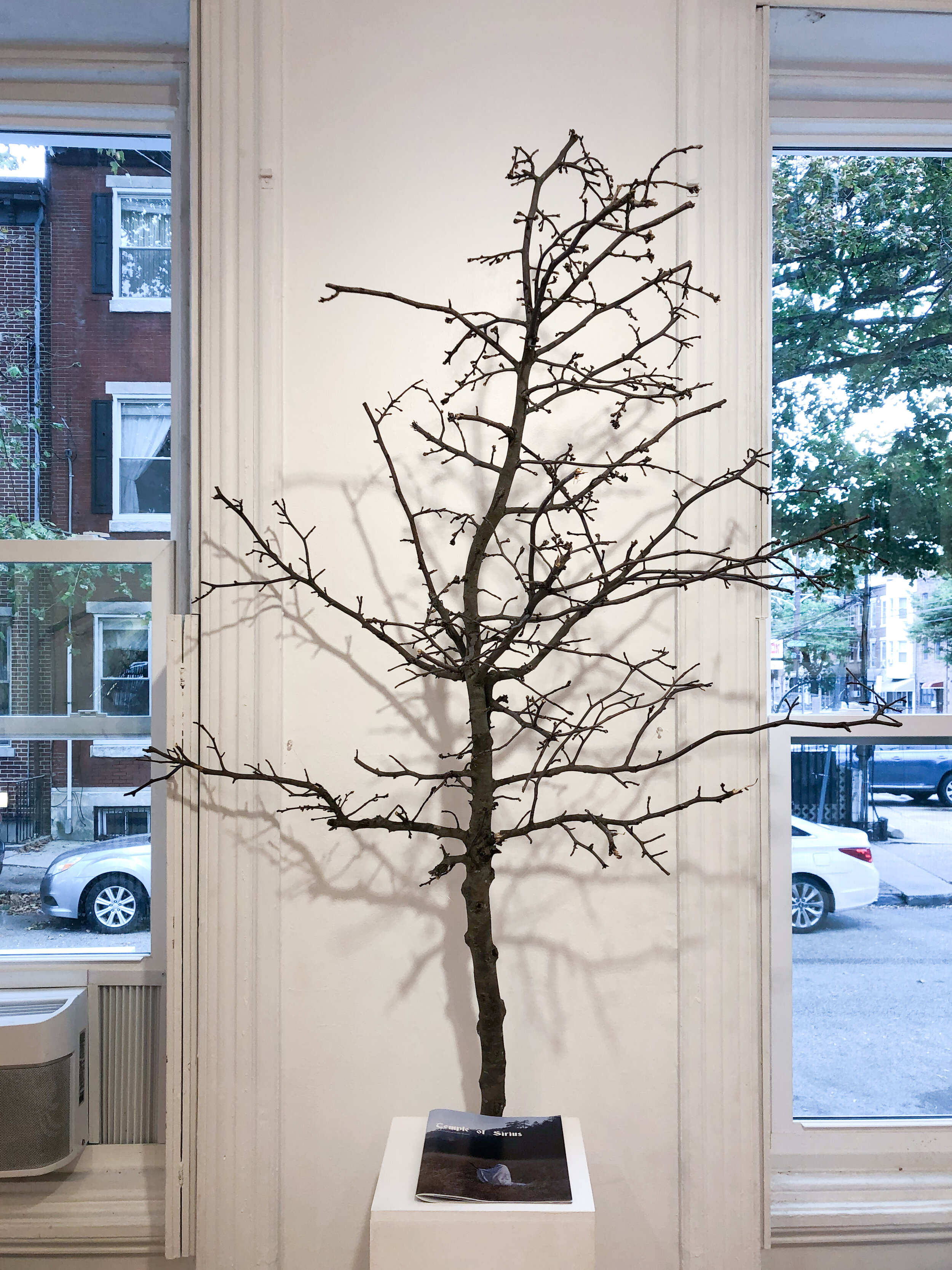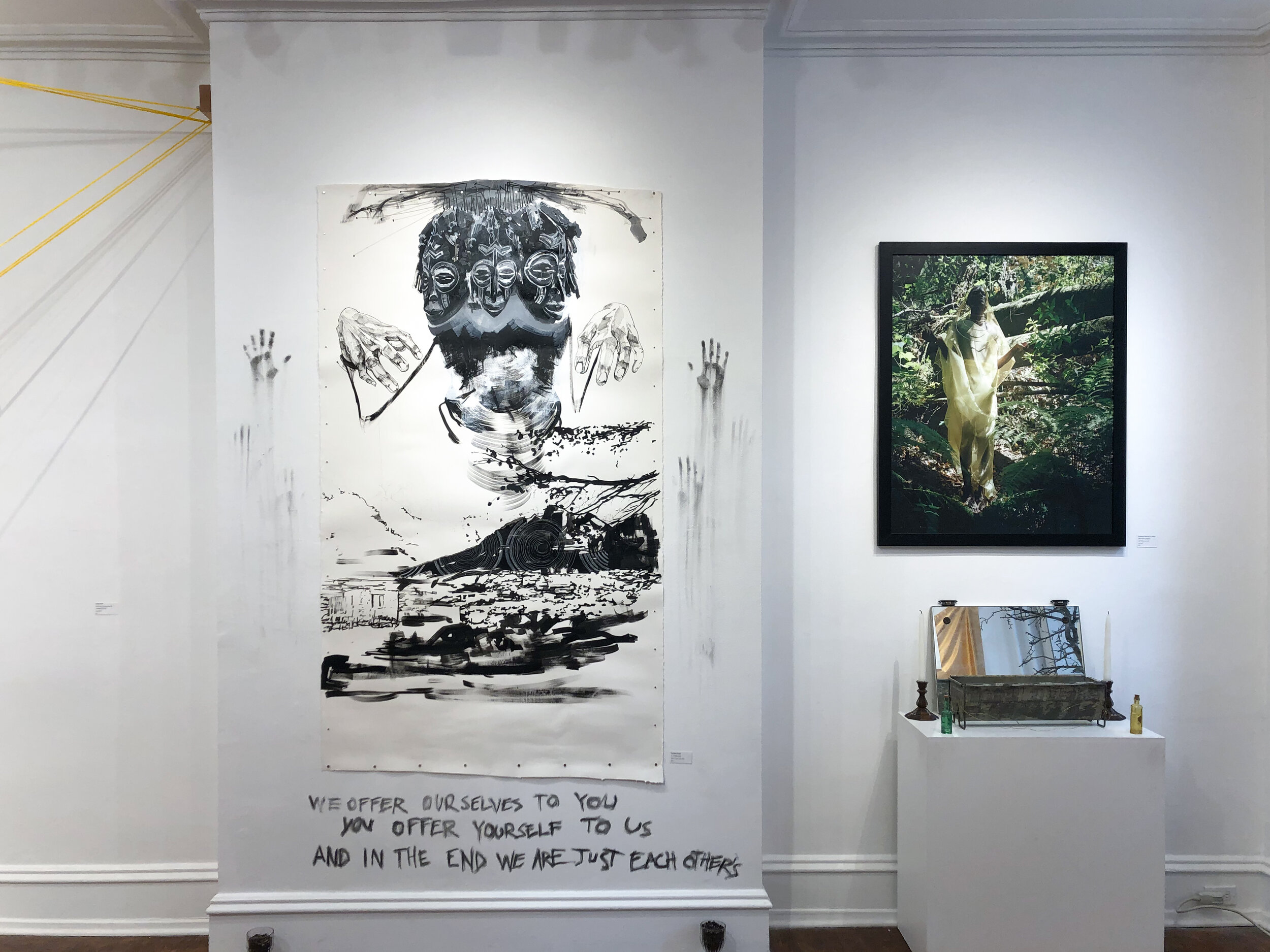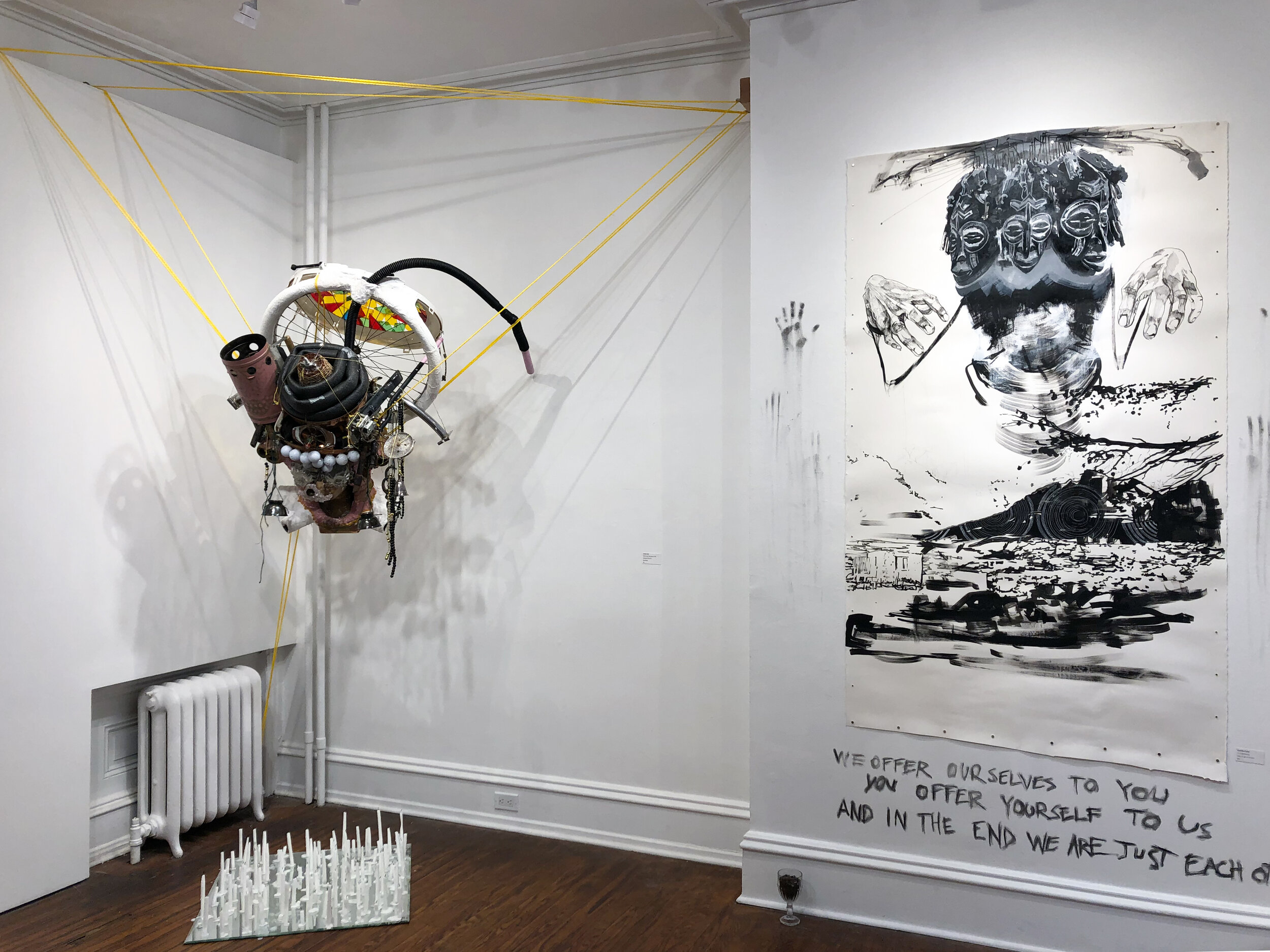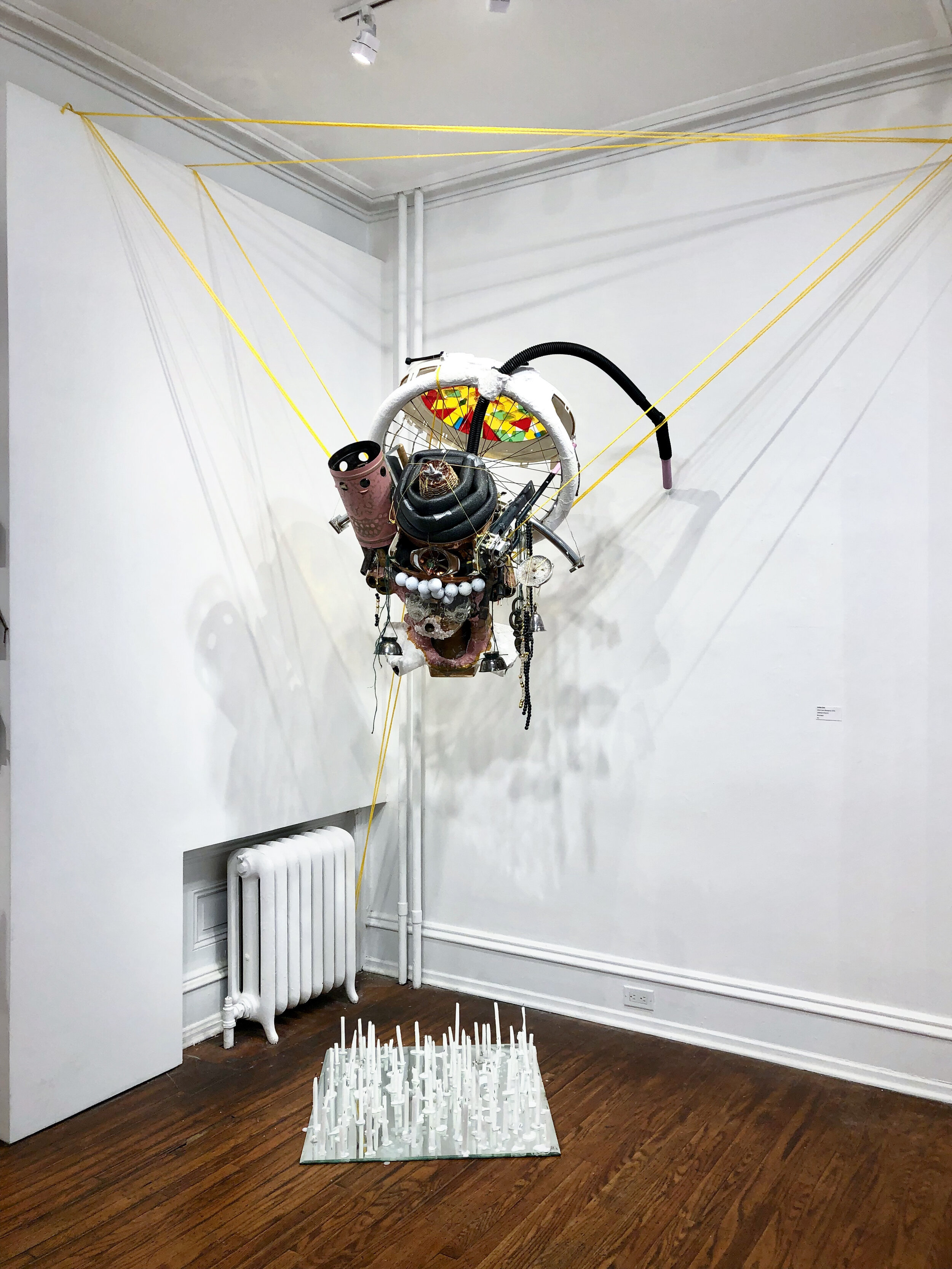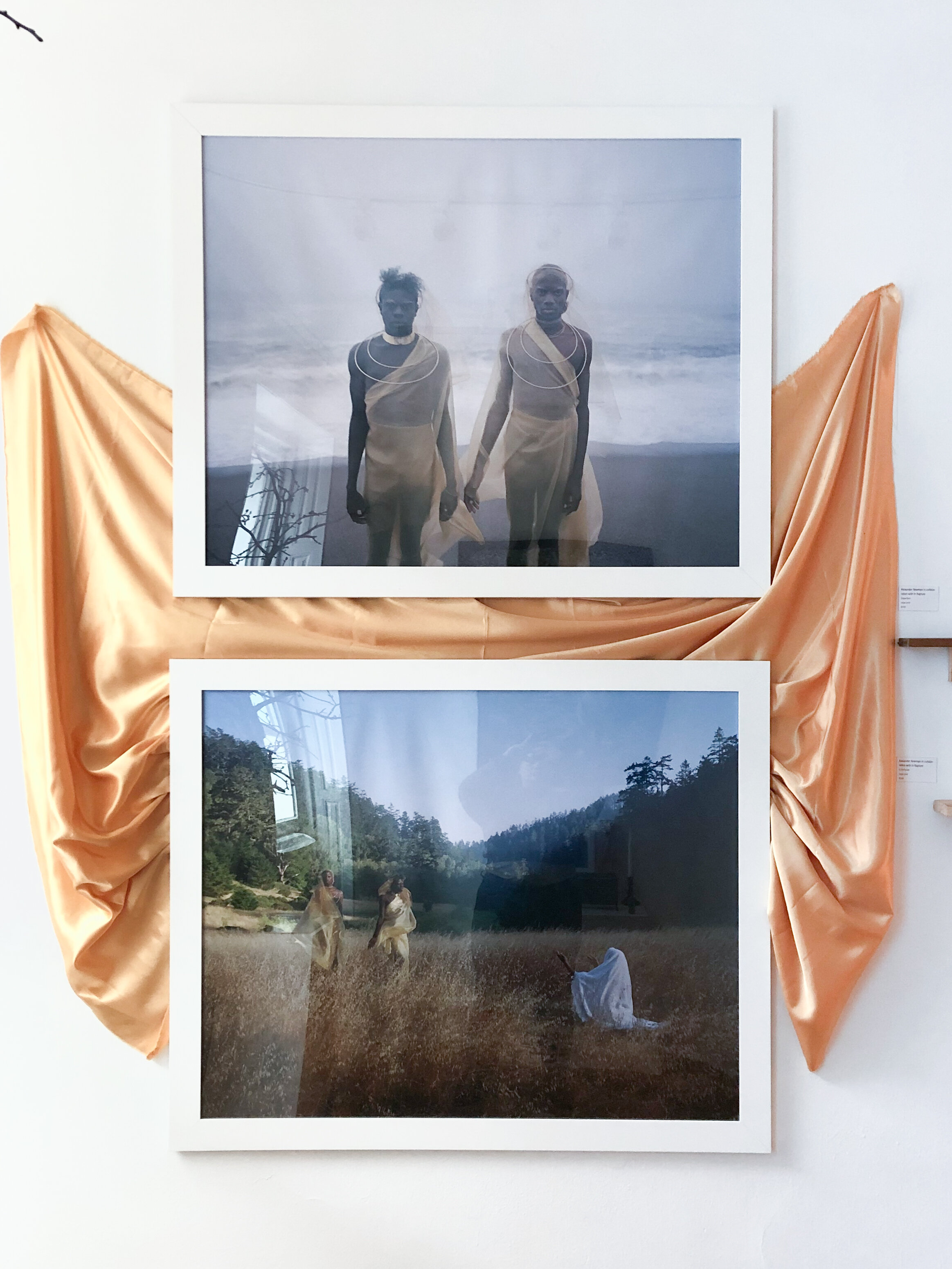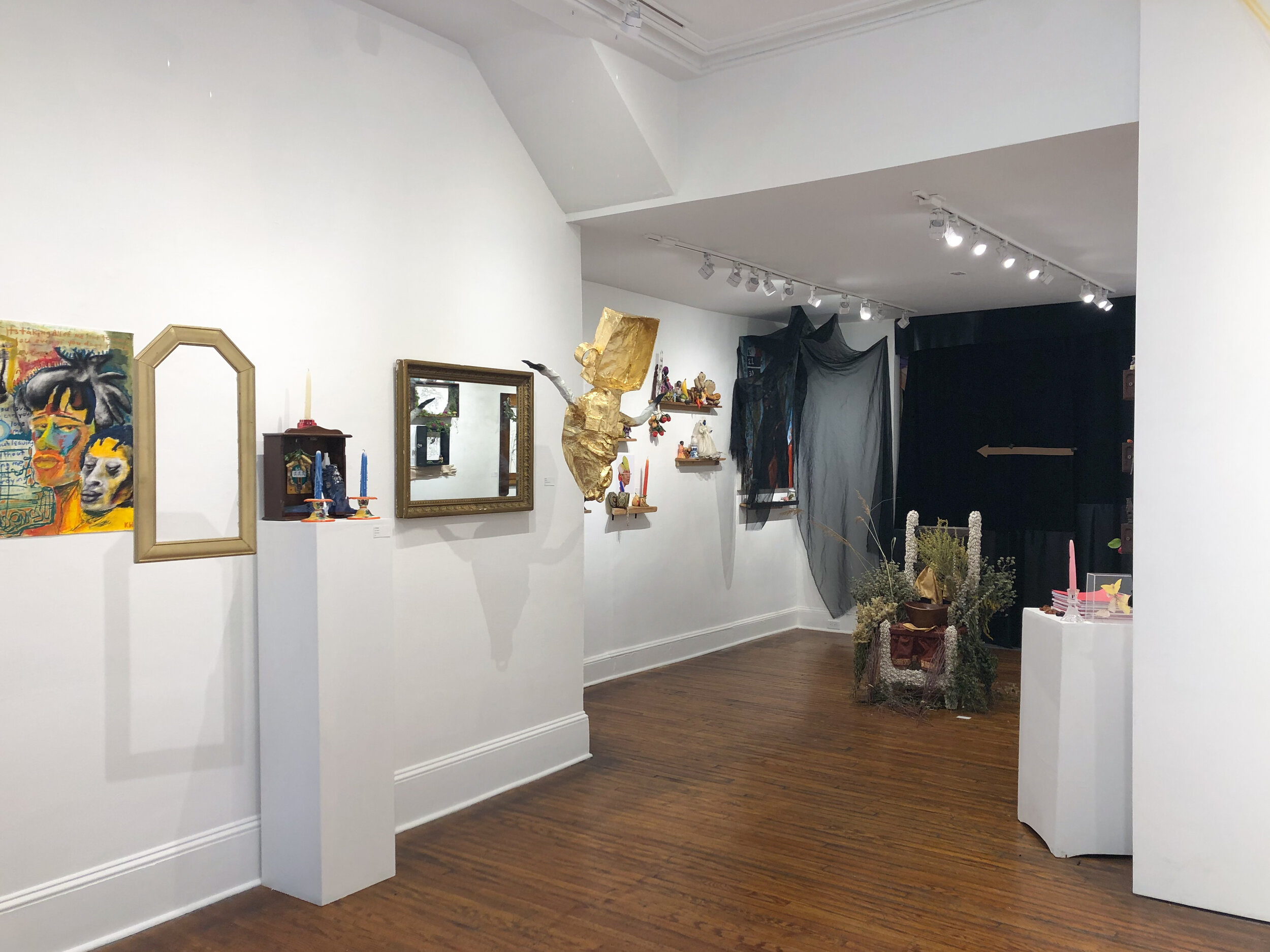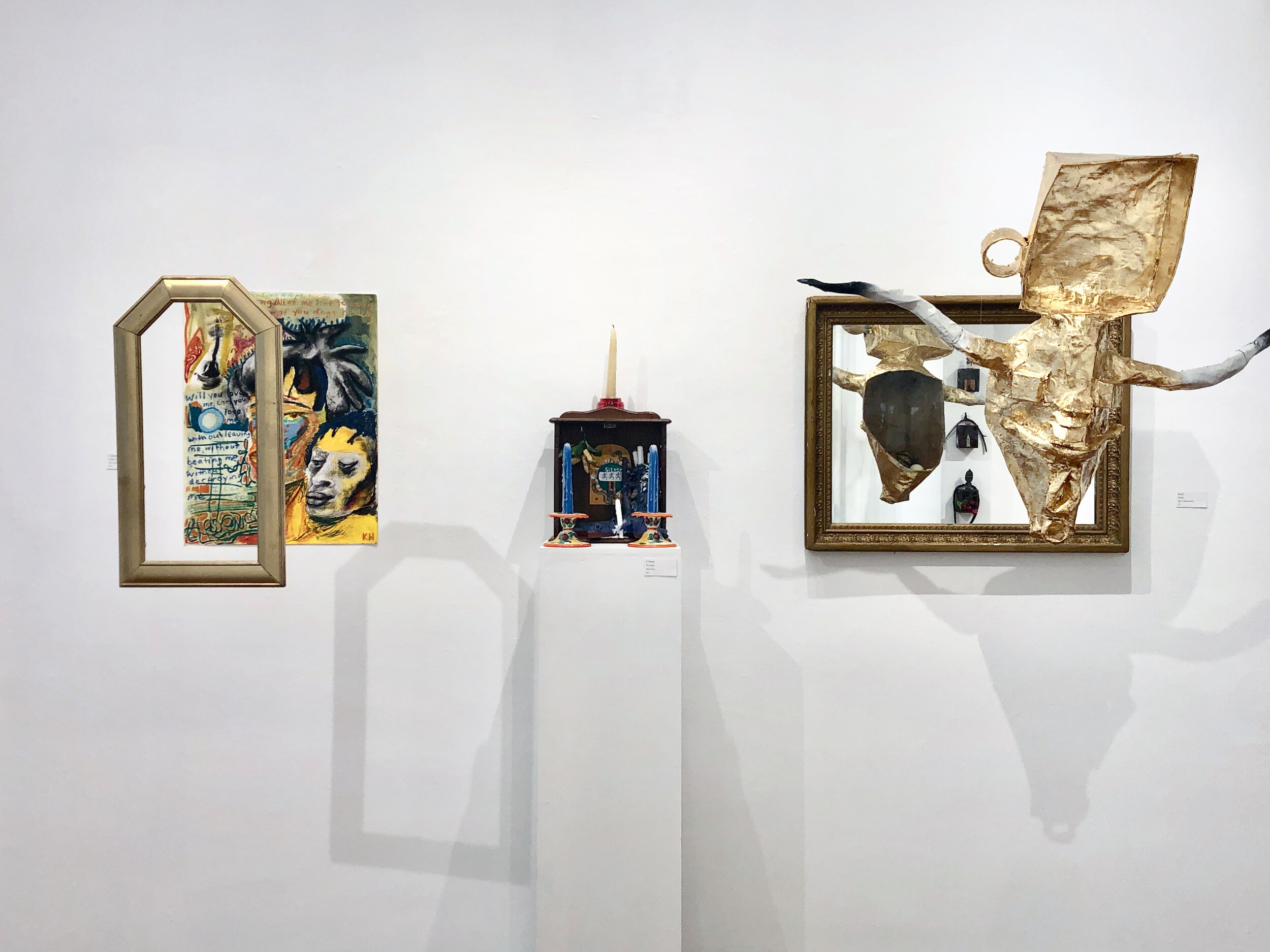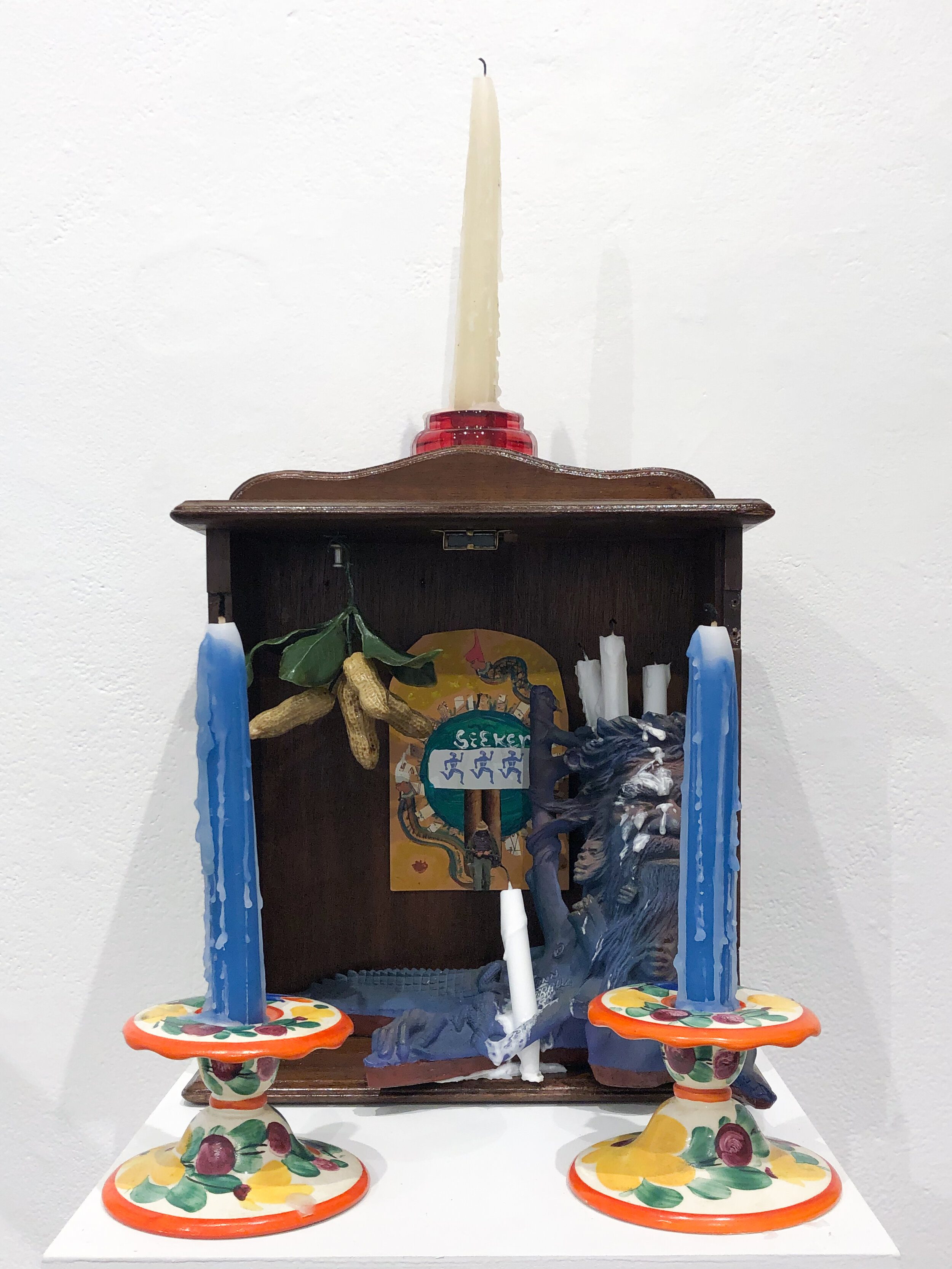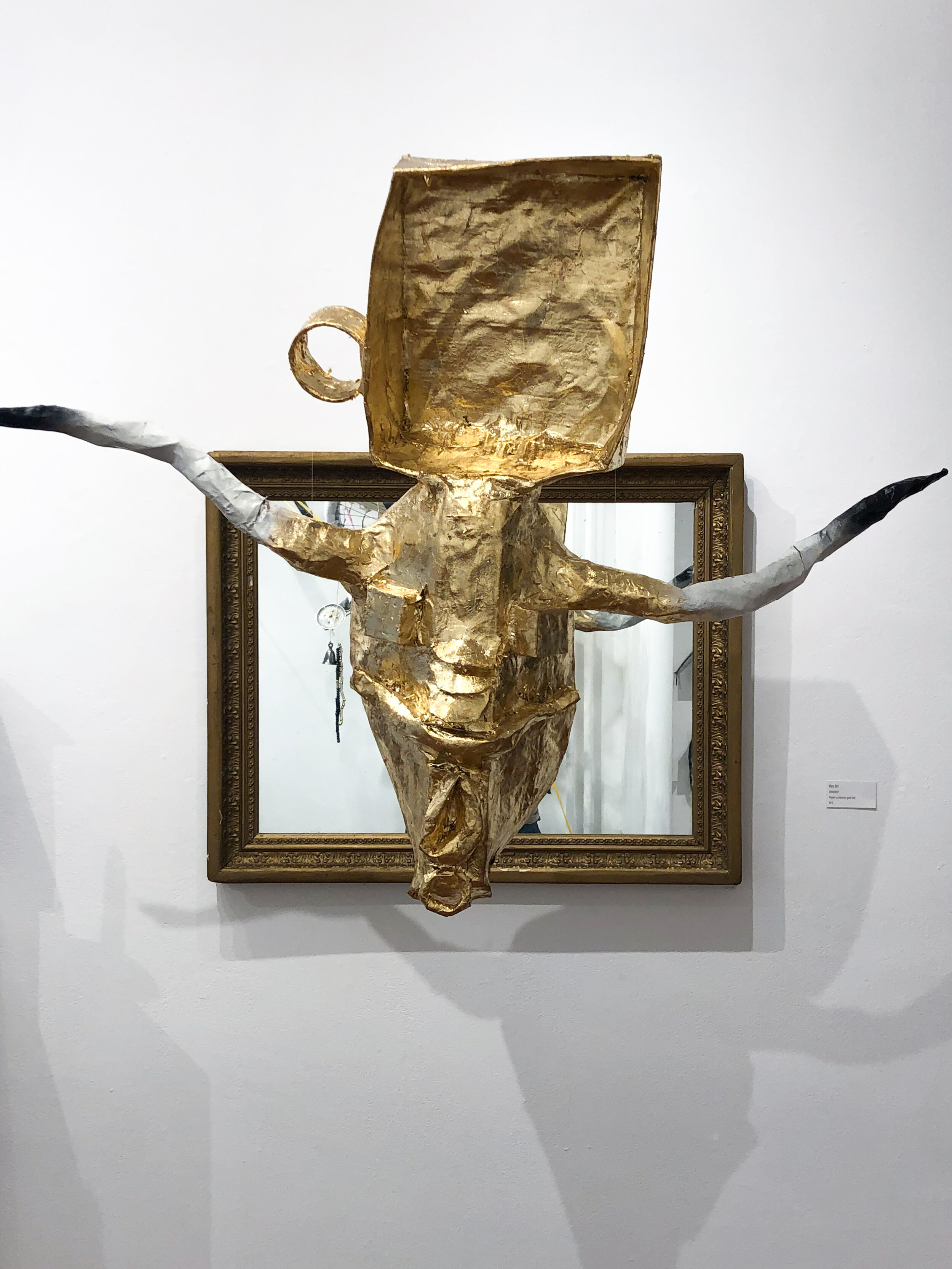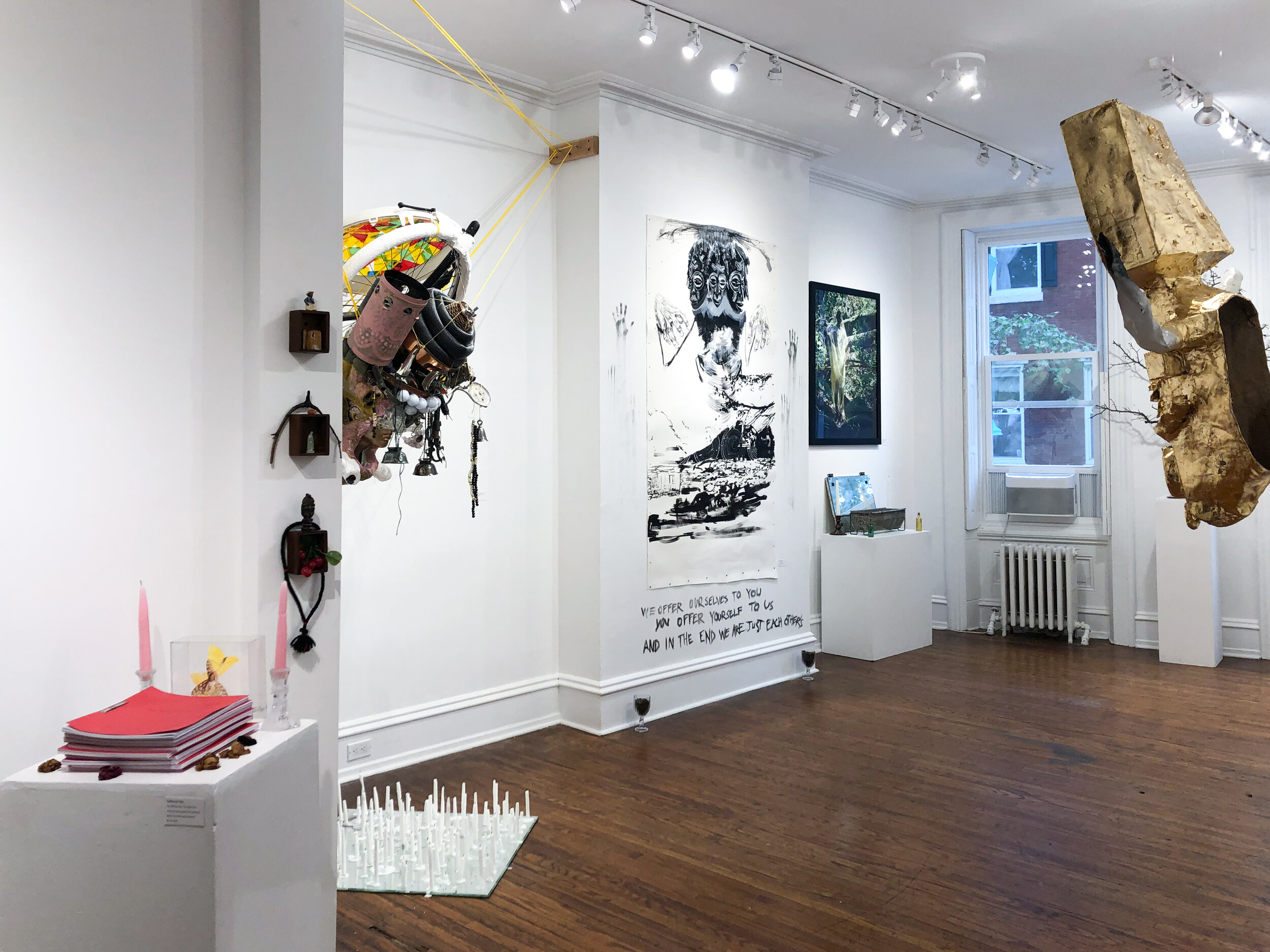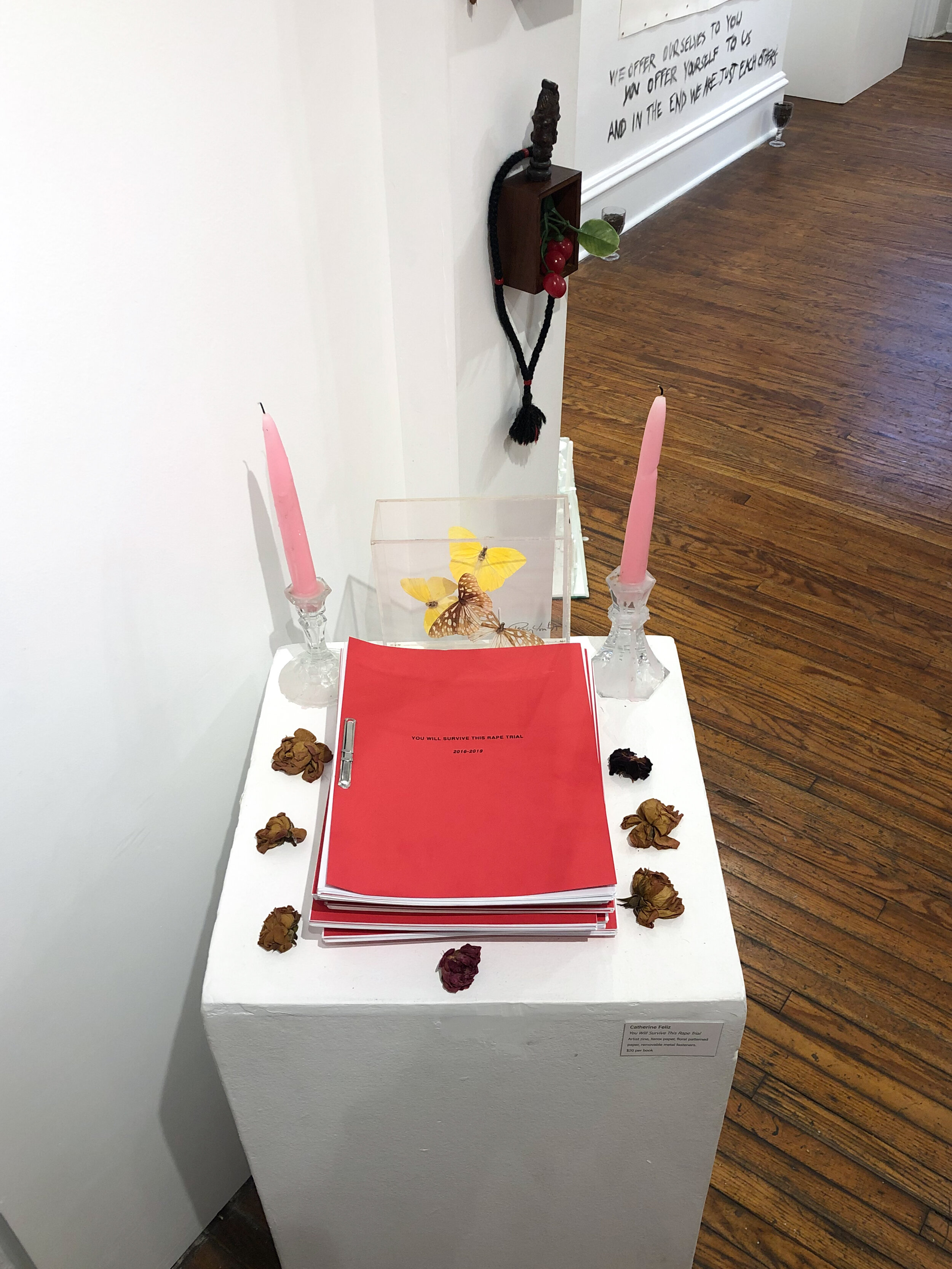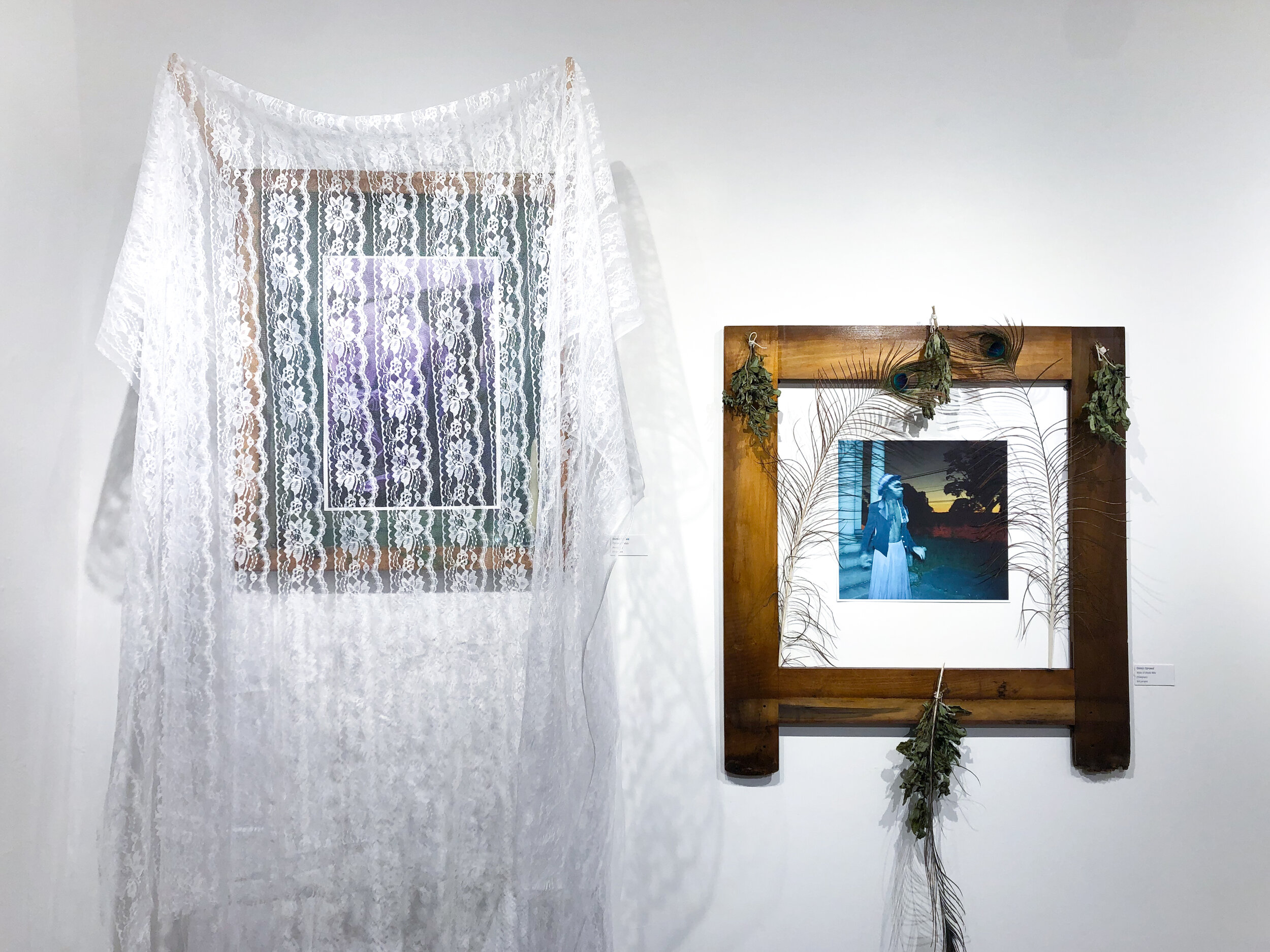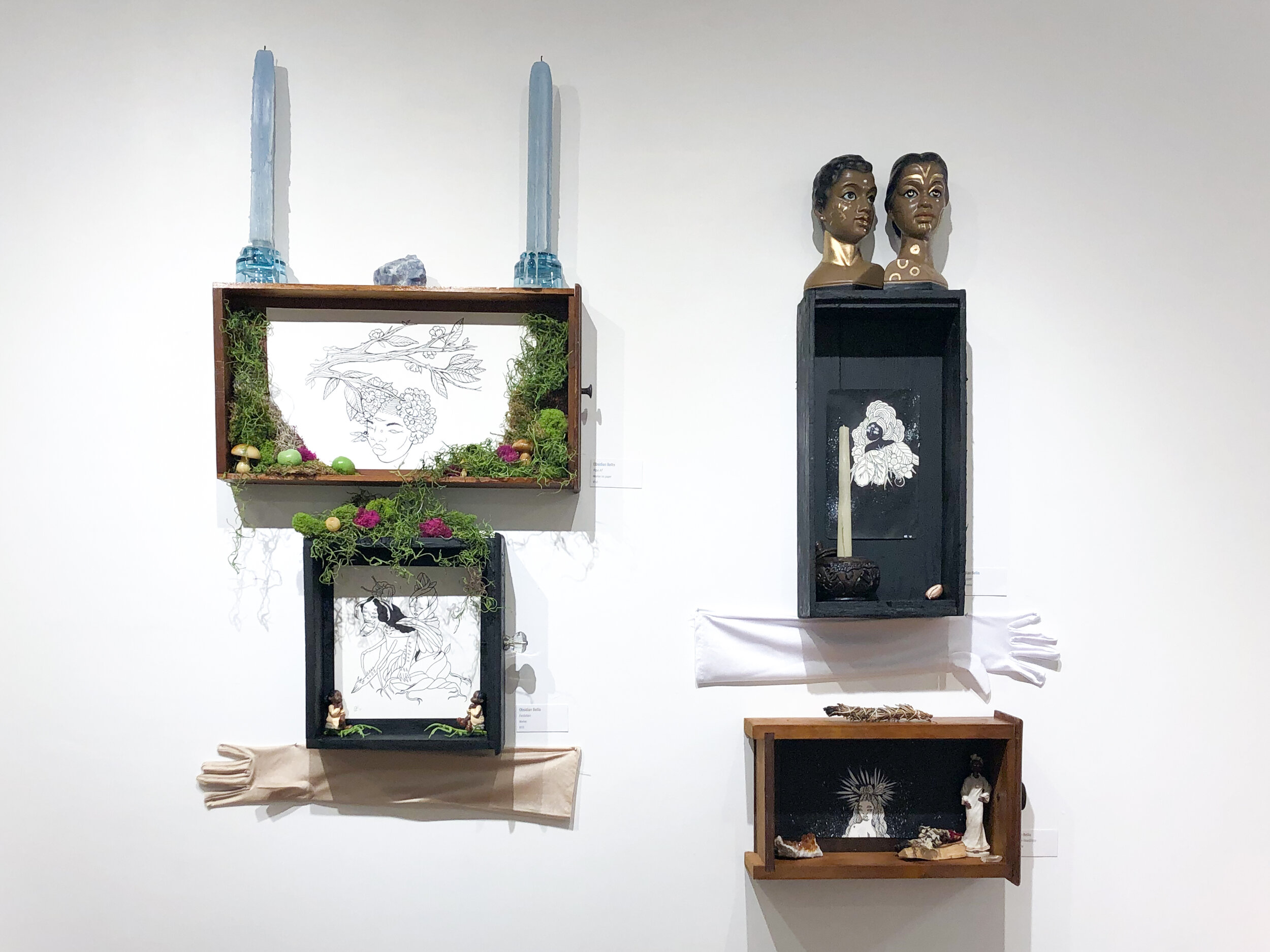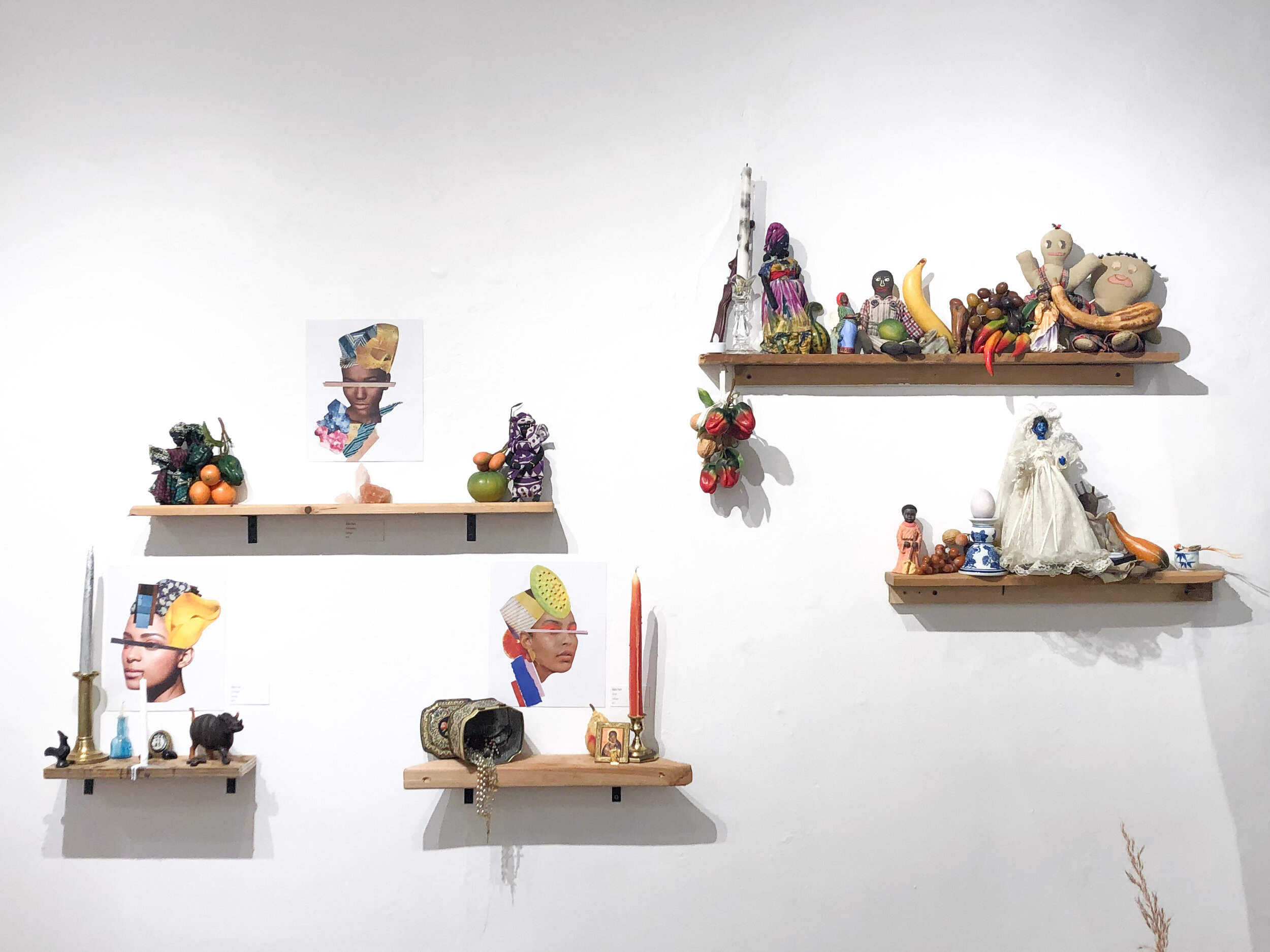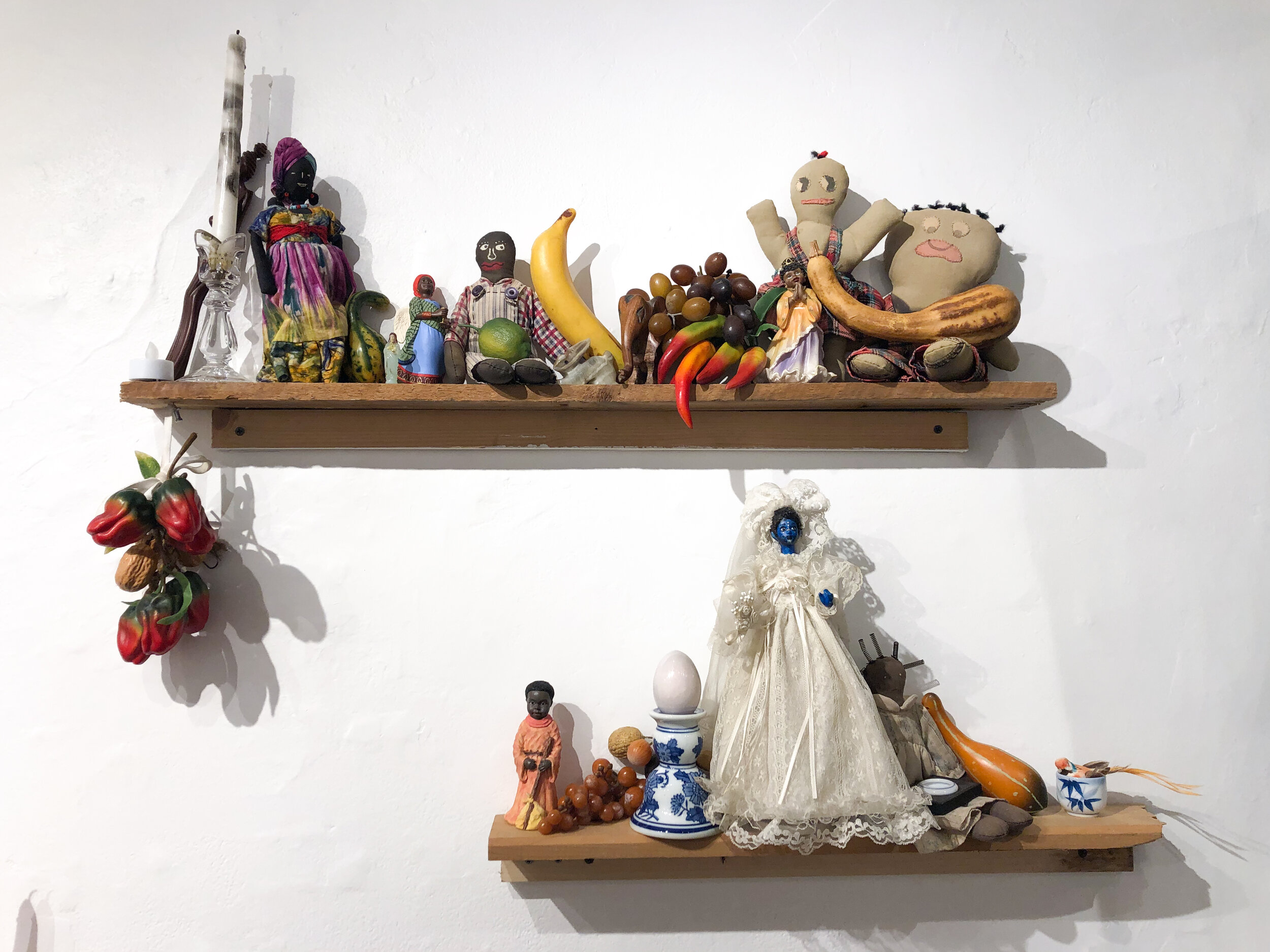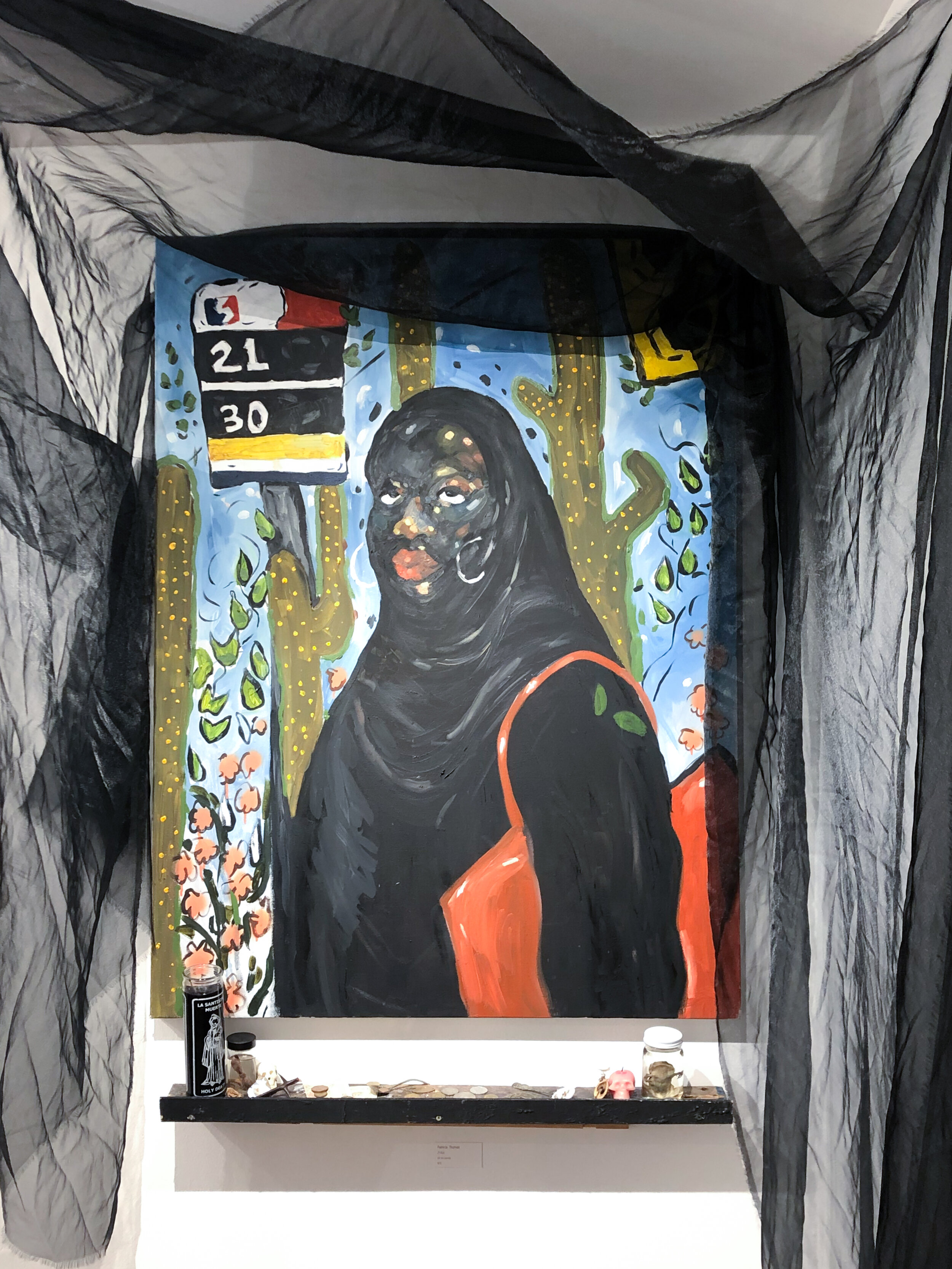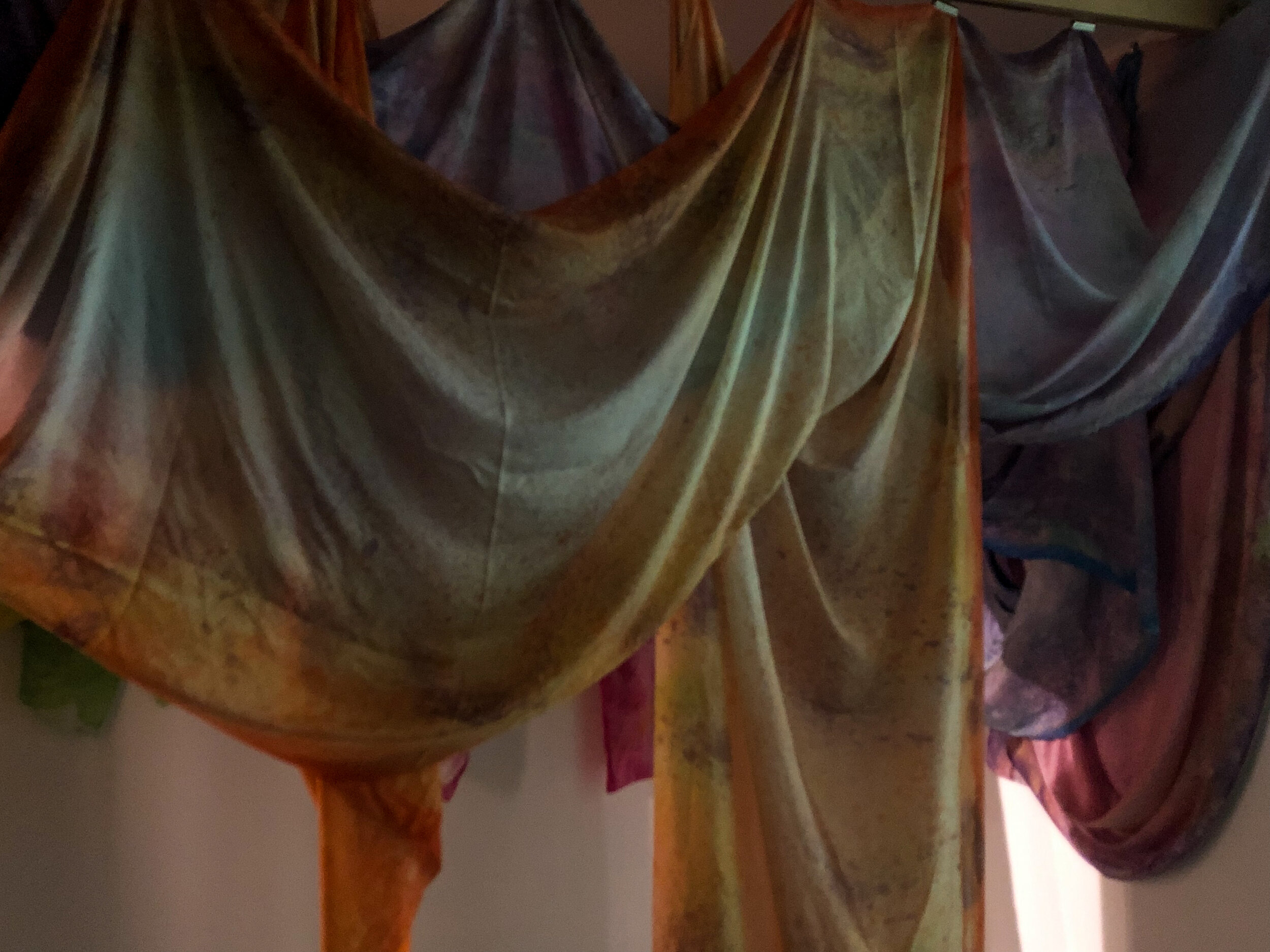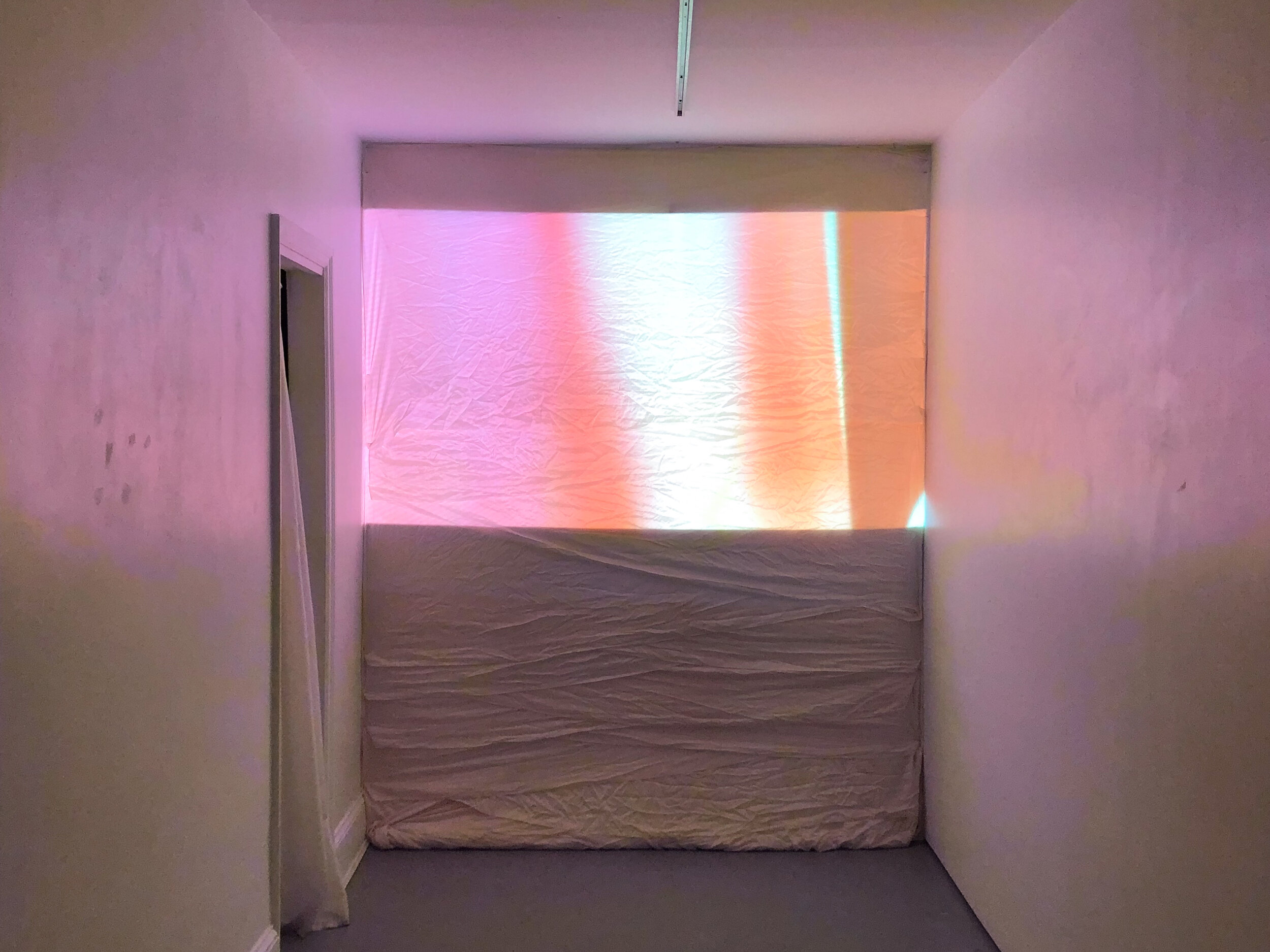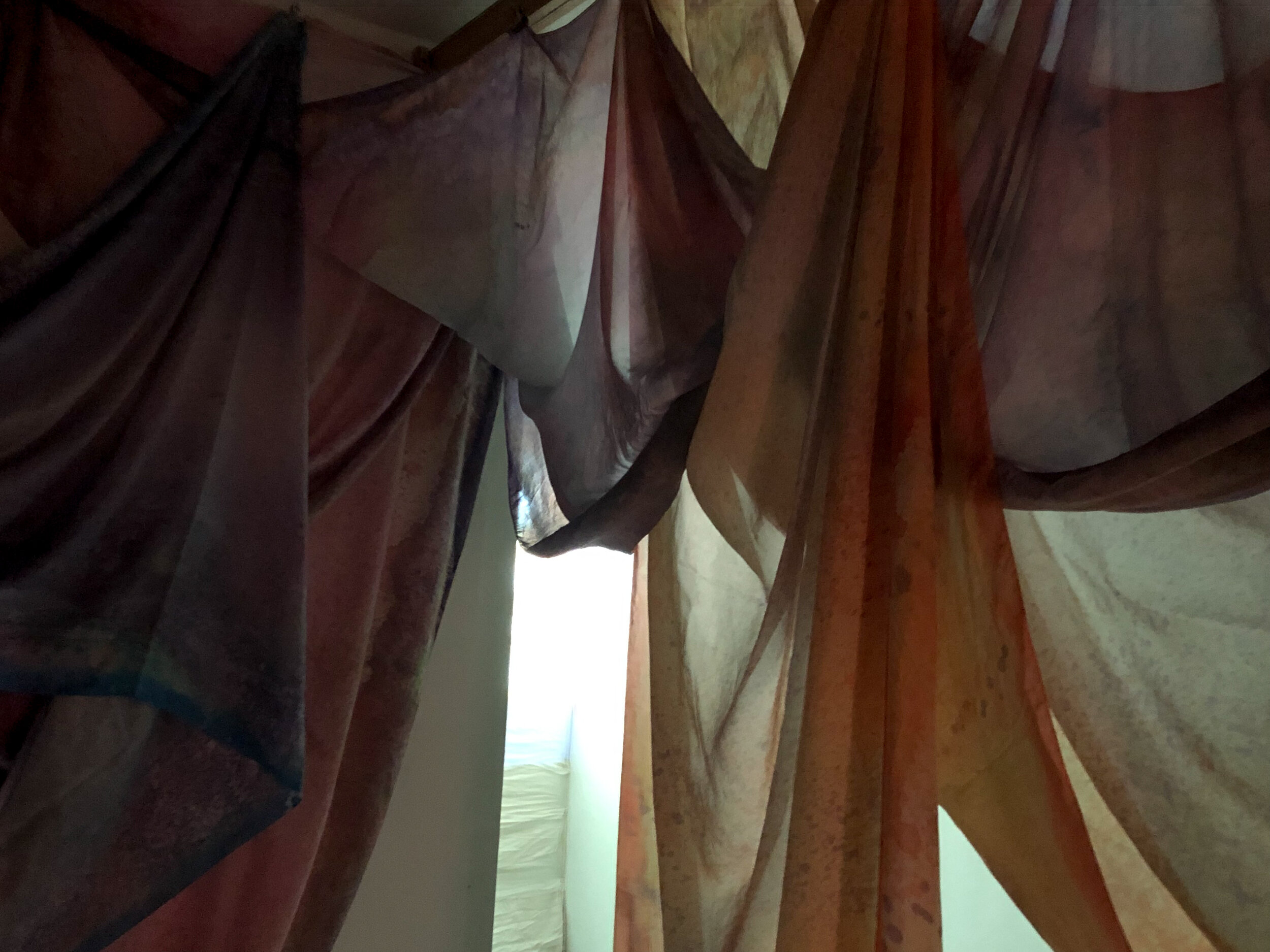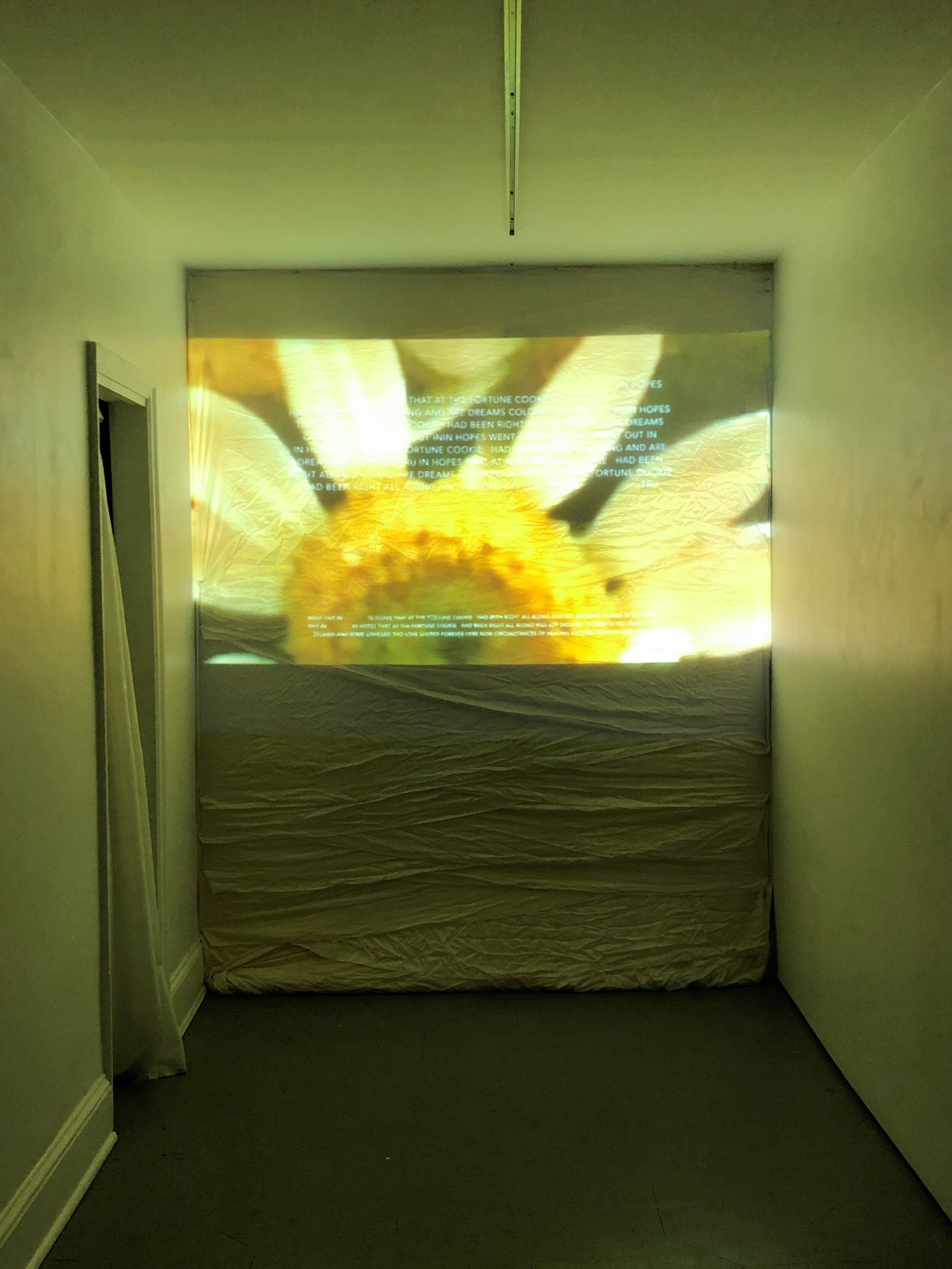Temple of Sirius
a group exhibition @ dvaa Supported by the Joseph Robert Foundation
Exhibition Runs: October 6th - October 27th, 2019
Public Opening Reception:
Sunday, October 6th 2019, 12-3pm
About the exhibition:
The Temple of Sirius is a sacred site of Black Divinity. Many deities have gathered here and present their forms to you as black bodies, sculpture, digital media, and the paper arts. The opening reception will include singing, poetry, and artistic bounty.
The Temple of Sirius is a sanctuary in honor of African astrological ancestry, our divine present, and the future we are crafting, all existing in one moment. This exhibition is a declaration, a war-cry, and a lullaby. Together these voices proclaim that their experience is divine. Their present existence is of their own creation; it is holy and infinite. This art is a particular form of self-love, an intimate awareness of a cosmic truth: They are creators. They come as black bodies, as expansive minds, as artists. They come as shapeshifters, prophets, oris, ether, and beasts, all holy in their own eyes of god. This exhibition is the second half to the performative work "Children of Sirius" that will took place at Vox Populi in June. This is not play but a place of pilgrimage for all people, but especially black people, with the intention of waking the divinity within the observer in this colorful and meditative place. Marginalization, trauma, and an engrained erasure is experienced as systems — and passed generationally, — but through collectivity within art and expression we can rewrite patterns and remember who we are. Each individual being's experience is a direct manifestation of creation energy and therefore is never alone. Art, as the energy release of our universe, is never a solo process as we are unconsciously connected and influenced by each other, by other realities, by the earth, tangerines, the moon, trout, smog, woven fabric, skyscrapers, gnats, the list is infinite. The energy of each artist and artwork has found each other once again, and even your energy as observer has returned to us; welcome back to the Temple of Sirius.
ABOUT THE CURATOR:
“I am a shapeshifting, nonbinary, black poet, artist, curator, and moth. I connect to the Collective Unconscious via energy work, Active Imagination, mysticism, myth, magic, folklore, and fairy tales. This channelling often takes the form of poetry and illustration but here it becomes curation as I connect to the artist’s energy and work beyond simply aesthetics. I connect artists who are unconsciously vibrating together and use my organizational skills to give them all a space to sing. My curation forms a tangible permeation of a culture of Oneness - living in the reality that we all are manifestations of the same source energy and we all create our realities together. It is my purpose to create space to uplift fellow black artists as gods, to bring balance and truth to our experience. I am a liminal being of race, gender, artistic practice, and existence reclaiming the spiritual body of black and brown people who have been trapped in generational trauma and colonization. My work offers methods to break these individual barriers and reveal the symbols, archetypes, emotions, and lessons that exist in us all as a collective consciousness, to heal, awake, and empower.”
malachilily.com @theholyhawkmoth @hawkmothevents.
About the Artists:
Obsidian Bellis identifies as a Black American non-binary femme person. They were raised in a single parent matriarchal household on the East Side of Buffalo, NY. The maternal side of their family is Gullah Geechee (Southern American) and their father and paternal grandmother immigrated from Jamaica. The women and non-cis men identified people in their family who raised them are people of faith and have done the bulk of labor to keep things together. Older matriarchs also held experience like mixing skincare products, quilt making, repairing clothes, styling hair, creating memorable desserts, and home-brewing. This was the first major impact that valuing higher powers and being resourceful had on their lifework.
ocean “It is my belief that nature is a powerful part of the universe as well as a key in my personal development and journey as a artist. I am always seeking something that I'm still not sure I can capture, but I’m determined to do so. That is the natural world outside of the developed modern space that I've always navigated and which has occupied much of my work. I seek to find, preserve, and connect with the "otherside" as it seems to serve as a key to my higher/divine self — a self that is there, but one that I have yet to fully embody, and one that is taking its time to develop from every part within.”
Patricia Thomas uses historical references of blackness, its influence in advertising, its fetishization, and exploitation from experience and research to further investigate the meaning of beauty in Westernized figure painting.
“As a Black American, learning my history was a beautiful and growing experience. My ancestors are my protectors, and I grew up around those representing figures fondly (dolls, porcelain figures of black families). And era’s worth of images were made for me to denounce my blackness and belittle our beauty, but painting these figures allows me to reclaim the sheer beauty it is to be us.”
Alex Farr is a nonbinary playwright, poet, vocalist, director, and visual artist based in Philadelphia. They graduated cum laude from Colorado College with a BA in Theater in May 2016 and promptly moved to New York to start their career. They have since worked on several projects in cities across the east coast, were a 2017 creative resident at SPACE on Ryder Farm, and are currently an active member of Philly Arts Collective. Alex is passionate about art that moves its audience to be better to themselves and each other, art of love and reverence, art of conflict, art expressly aware of the ways in which pop culture passively and actively consumes blackness. Alex ceaselessly aims to explode the idea of a monolithic black identity in favor of a more fluid, imperfect, colorful understanding of self, love, queerness, and queer blackness.
Jaycee Jackson is an audio/visual artist from the Southside of Pittsburgh who grew up skateboarding and listening to loud music. They like fast, intense sounds with harsh visuals and bright lights, taking inspiration from mostly everything/one around me.
Kyle Yearwood “My artwork is a testament to the power of self-love & a wake-up call to just how magical we all truly are. With the use of: photography, film, compositing, special effects, and animation, I'm able to create new realities in which anything is possible. When describing my style, these words come to mind: afro-futuristic, surrealistic, ethereal, and magical. I really love that I am able to depict my blackness in my artwork because I believe it's important for people of color to have a cornucopia of positive images & representations of themselves. I also aim to use my artistic abilities to create empowering representations of the divine feminine, especially women of color.”
In Vitche-Boul Ra’s primary studio practice, he utilizes recognizable dance language and colloquial gesture to develop performance works which manifests as play. The work applies irrationality in combination with the notion of dance as recreational labour to explore experiences of elitism and the mundane. Typically the performance attempts to unclearly articulate the relationship between performing body and viewing body. This is accomplished through language and spacial relationships—always building a matrix of power in flux with shifting accountability. Through repetition of gesture, doggy language, and direct questioning, Vitche-Boul Ra manipulates real time and recollection. He establishes a game inside the viewer, confronting them with their own memory, resulting in the reaffirmation of their securities while simultaneously destabilizing them. Can they follow, or better yet, aren’t they leading? This technique opens up the performance space as a grounds for play—a hunting ground and a jungle gym.
Osimiri Sprawl is a Black, Transgender, Queercrip, and proud Philly jawn. He is a Spoken Word Artist, budding Novelist, and aspiring Comic Book Writer. He was the 2015 Grand Slam Champion of the Philly Youth Poetry Movement (PYPM). He was a 2018 College Union Poetry Slam Invitational (CUPSI) Semi-Finalist, and Winner of the Best Love Poem Award. He was a 2018 Philly Pigeon Top 5 Finalist, and was selected to be a Till Arts Project 2018 Emerging Artist Fellow. His poetry has been featured on Drop The Mic, The Vibe, and Asian Arts Initiative. He has had poetry published/been interviewed by publications such as Tinderbox Poetry Journal, Puerto Del Sol, and The Broad Street Review. He is a member of Babel Poetry Collective, and serves as the Outreach Chair on their Executive Board. He is currently working on his first chapbook, To the Crickets Who Sing to The Moon, a testament to his ancestors. In his spare time, he serves on the Valley Youth Pride Taskforce, advocating for queer and trans youth suffering from homelessness.
Jordan Deal is an artist that makes artwork that is multifaceted in body and nature. Black, brown, purple, and green; earthly dialects and glistening crevices, laced with protruding beaded jewelry and shiny rusted crowns. Curl dem with flowers. Play. Miraculous its immediacy and longevity. With neck elongated, ascents above the jaw, they transcend across the purple fields. Dancing with tongue, thunderclap. A dip into a beautiful abyss.
Komikka Patton “Mother used to scream, and when I heard her chills came on my skin. I have often awakened at dawn of day by the most heart-rending shrieks. I’ve never known if it’s from pain or pleasure, seconds before death or orgasm. The louder she screams, the more I blacken. No words, no tears, no prayers, from her victim, seems to quiet her piercing screams from its haunting purpose. And the scream is all over, strained or fragile till strong and then strained again. A timeless song. It ruptures. Stops, and then start again. Echoing and redoubling again, again, and again. A summoning, and eradicating of realms. Songs of peoples in futuristic and lost places that insert pauses, fast forwards, and rewinds. Where “x” marks the moment. The bomb and shelter. Screams that manifest into depictions that ink, cut, remember, and bridge past, present, and future. Death, Life, Black, and Time. “x” An immortal melody that converges at the intersection of awareness, alien abductions, power, and emancipation set on a post-apocalyptic stage, where Blackness is capable of existing without white. Mother use to scream, and when I hear her, I urge to scream back.”
Alexander Newman and In Rapture "My artwork is heavily influenced by the power of the geographic site. Diasporic identities, the uncanny nature of modernized landscapes, and the presence of ancestral power in physical space are all elements which inform my practice. As a visual artist who works primarily with film photography, I see this medium as a tool to create a complete and infinite observation of space, a process which allows one to pass through a deeply layered present, informed by both memory and spiritual power. I am part of an artistic collective, In Rapture, where I am the principal photographer, and my sister, Dr. Rachel Grace Newman, is the creative director. Her research, writing and curatorial work focus on histories of the colonial Caribbean, specifically those of TransAtlantic slave trade and plantation slavery, and on art of the African Diaspora. In Rapture, so named for the rapture with which we hold our ancestors who came before us, explores history and identity through large-scale styled portraits and narrative photography. Our work seeks to access the ancestral world and repair ruptures to our ancestral lines caused by the interwoven histories of colonialism and capitalism. We examine ancestral connections to geographic sites in a world impacted by the forced and voluntary migrations that took place under colonialism."
Shanel Edwards “The artwork I create live in a world where tenderness and rage coexist. Where I have autonomy over the process of healing and loving. There are no sharp corners but when I need it, there are knives. I find that radical tenderness helps me navigate my traumas and joys. It prevents falling victim to the world's attempts at erasing me. My artwork find plush landscapes for laughter and slow dancing with one another. They also locate wounds that are refusing to close, wounds that are healing. My art has become a compass for my identity and experience as a queer/ non-binary / first generation Jamaican. I have given myself permission, finally, to be all these things. Through that process, my community and chosen family experience a tenderness they deserve. My art is for the people who create worlds with their love and devotion to liberation. For folks who dream of limitless black queer love. For Black queer femmes who are still trying to access their rage and navigate the confusions of senseless violence. We are all here together, being sweet with ourselves while destroying the systems that destroys us.”
Anthony "Cozcon" Conover “My body is poetry.”
Charlyn Griffith is building a Queer oasis in the desert of Joshua Tree where folx can experiment with art and design concepts in the safety of the sand. They are a parent to 3 younger ppl and an auntie to many. They have been a doula/midwife, and educator and a passionate lover and patron of the arts. They are a performance artist whom makes visual work to support their public facing spectacles. Black = Indigenous = Everything.
With a commitment to studying the legacies of resistance in the Afro-Atlantic, Catherine Feliz’s multimedia projects consider the desires that allow dominant constructions of power, empire, and place to take root. As an artist, epistemology, intimacy, tricksters, place, and opacity are themes explored in their work. “My historiographical interests are influenced by my continuous seeking of origins as descendant of a new world first contact people. I deconstruct experiences to reassemble them again in experimental videos, prints, sound installations, and sculptures. The worlds I create whether it’s a digital landscape or a timeless Caribbean ruin, situate viewers within the imaginary and asks them to question their idealized perceptions of our modernized world. Through these conceptual and aesthetic choices, I’m working to carve a space for us to imagine new stories about who we are within new visionary sites.”
